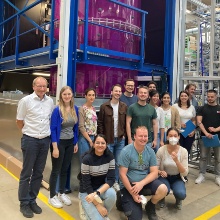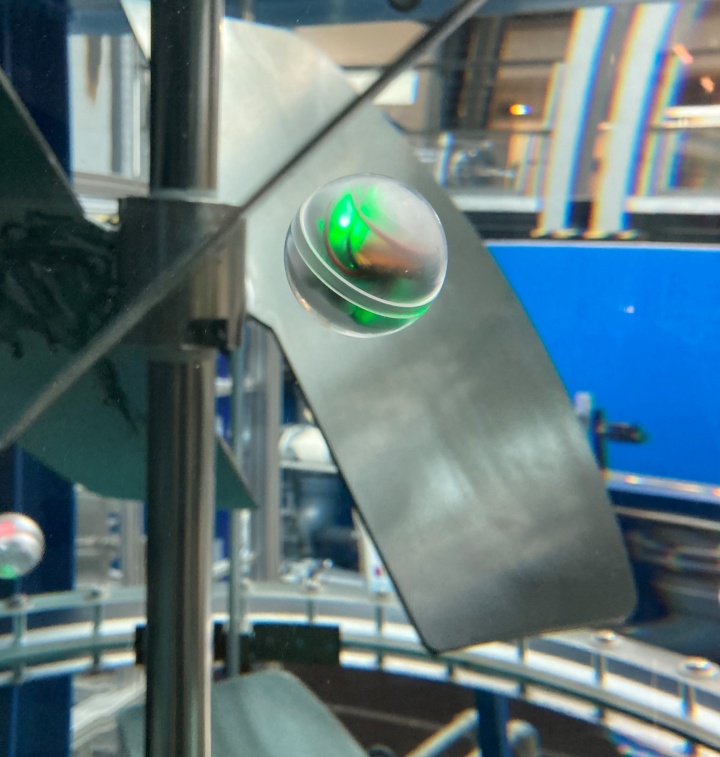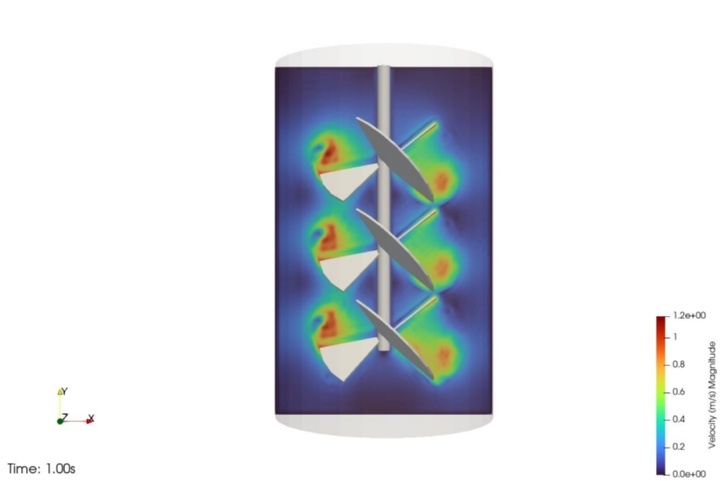Pharmaceutical products, medicine, proteins, and nutrients are usually produced on an industrial scale in a bioreactor. Although the technology is well established, more research is needed in order to be able to increase the production volumes. A visual inspection of the production is usually not possible because bioreactors are made of opaque steel. As part of the DFG priority program “InterZell”, researchers were able to optically monitor flow behavior in a transparent bioreactor on an industrial scale of 15,000 l. Worldwide, there are few “glassed” bioreactors on such a large industrial scale.
Sustainable food, medical, or biotechnological production can help to make better use of limited resources. This is where the research of the DFG program “InterZell”, which is coordinated by the University of Stuttgart, comes in: Following the example of nature, the researchers are investigating how new cell-cell and cell-bioreactor (InterZell) production processes can be developed. Research is conducted in a resource-efficient manner in small bioreactors, mostly made of glass, where production processes can be easily seen inside and an understanding of the processes can be gained. The next step is to transfer the research results to an industrial scale. However, what succeeds on a small scale of only a few liters does not necessarily work on an industrial scale of several tens of thousands of liters. The scale-up is often a critical factor – also because industrial bioreactors are usually made of opaque steel for stability reasons and thus resemble a black box.
Glassed bioreactors
In order to be able to visually follow the processes on a large scale, Prof. Michael Schlüter, head of the Institute of Multiphase Flows (IMS) at the Hamburg University of Technology (TUHH), developed a transparent polyacrylic 15,000-l bioreactor with industry partner Boehringer Ingelheim Pharma GmbH & Co. KG. This provides unique insights into the flow behavior. Mixing times in the bioreactor can be determined by staining. The model simulation of lifelines shows the flow behavior in the bioreactor on the basis of individual particles. This expert knowledge can help researchers to optimize physical and biochemical parameters during the scale-up.
Training for industry and research
The flow behavior in a bioreactor is essential for the nutrient supply of microbial production strains. But in the giant bioreactors, process parameters cannot be precisely measured and tracked at all points. In order replicate the processes and predict the process parameters, the researchers use digital twins and simulations. However, the statements obtained in this process are quite abstract. “ A ‘glassed’ bioreactor can therefore help to visually keep track of process behavior, data collection, and calculation,” says Michael Schlüter from the IMS of the TUHH. The training program for young scientists is designed to help make experts fit for the future. “There is a considerable need to train experts who can transfer results that work on a miniature scale to an industrial scale”, say Prof. Ralf Takors, coordinator of SPP 2170 from the Institute of Biochemical Engineering at the University of Stuttgart and Dr. Martina Rehnert, the project manager responsible for networking among the researchers.
Priority program SPP 2170
The research network includes 10 research projects with a total of 70 scientists. These are funded by the German Research Foundation (DFG) in the “InterZell” priority program (SPP 2170) for six years. In order to increase the sustainable production of active ingredients in the bioreactor, model parameters were investigated in the bioreactor during the first research period. In the next three-year funding phase, this will be transferred into practice.
Expert Contact:
Prof. Dr. Ralf Takors, Dr. Martina Rehnert, Coordination of SPP “InterZell”, University of Stuttgart, Institute of Biochemical Engineering, Tel. +49 711 685 69925, E-Mail




